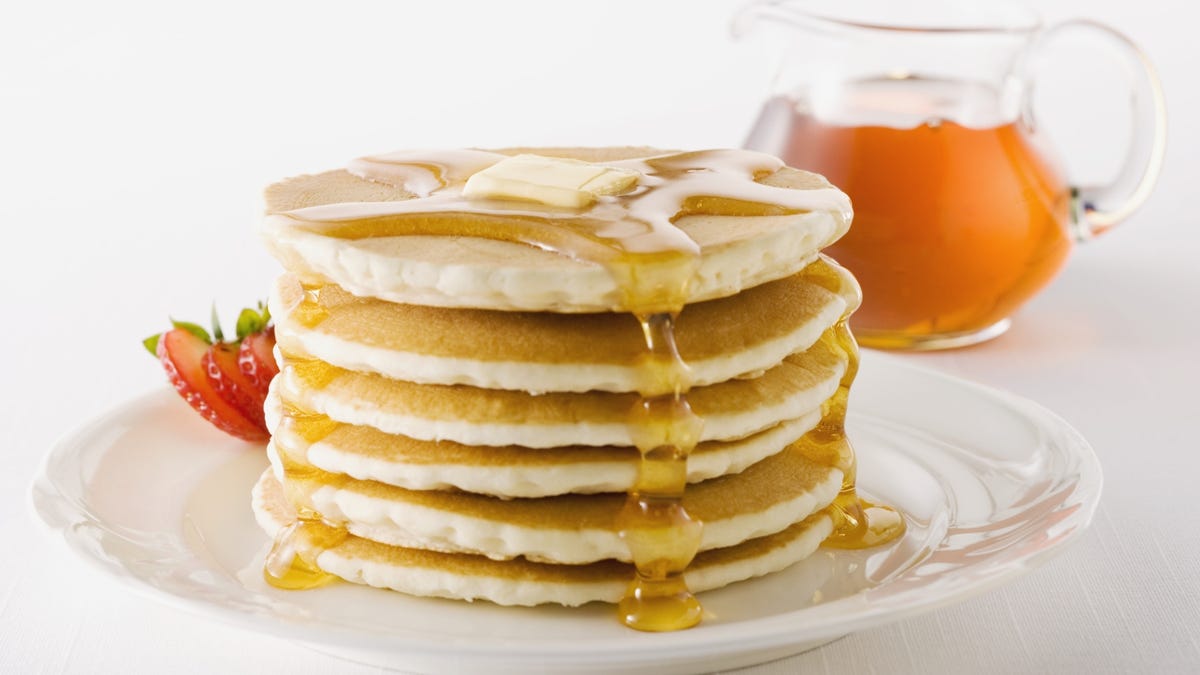How perfect pancakes are helping prevent blindness
Researchers at University College London are studying the physics of pancakes to help improve treatments for glaucoma.
Glaucoma is the world's leading cause of irreversible blindness, affecting 3.54 percent of the global population aged between 40 and 80. There is no cure; treatments are focused on management, and preventing further damage.
The main cause of this damage is increased pressure caused by fluid in the eye, and in order to help figure out how to improve surgery for glaucoma, researchers led by Ian Eames, professor of fluid mechanics at University College London, are looking at pancakes. Their research has been published in the journal Mathematics Today.
More specifically, the physical processes pancakes undergo when they are being cooked.
"Pancakes come in many shapes and sizes and everyone has their favourites -- some prefer a small, thick pancake with a smooth surface whereas others enjoy a large, thin crêpe with 'craters' and crispy edges," Eames said.
"We've discovered that the variations in texture and patterns result from differences in how water escapes the batter during cooking and that this is largely dependent on the thickness and spread of the batter."
While studying how the water escapes from the pancakes can help make better pancakes (a noble goal in its own right), it can also help understand how flexible sheets, such as the human retina, interact with fluids and vapours, such as those that occur in glaucoma.
For their delicious research, the team used 14 different recipes for pancakes from around the globe, analysing the pancake's aspect ratio, or its diameter to the power of three in relation to the volume of batter, and the baker's percentage, or ratio of liquid to flour in the batter.
For all pancakes, the team used the same pan and the same heat and no oil or fat to grease the pan. The amount of egg and flour remained constant, but the amount of milk varied between pancakes. The lowest aspect ratio of around 3 was found in thick pancakes, such as Dutch poffertjes, while thin French crepes had the highest at around 300. The lowest baker's percentage was 100, equal amounts of flour and liquid, while the highest was 200-225, a thinner batter with much more liquid.
The team found that thicker batters at 100-120 tended to trap the water vapours, causing irregular craters on the bottom of the pancake. This causes islands to form on the top of the pancake, since the thickness is no longer uniform due to the trapped vapour.
Medium batters with a baker's percentage of 175 release vapour smoothly from underneath as they cook, creating an even colour and texture.
The higher baker's percentage pancakes at 200-225 wicked the vapour away smoothly as well, but the bottom of the pancake was speckled with dark spots, while the top surface was evenly coloured, but filled with tiny channels where the vapour had escaped.
Generally, the team found that if the pancake batter spread more smoothly and easily in the pan, it would result in a more even pancake, to a point. The really thin batter needs to be spread physically across the pan, like making crepes.
But what does that have to do with eyes?
"We work on better surgical methods for treating glaucoma, which is a build-up of pressure in eyes caused by fluid. To treat this, surgeons create an escape route for the fluid by carefully cutting the flexible sheets of the sclera," explained co-author Peng Khaw, director of the NIHR Biomedical Research Centre at Moorfields Eye Hospital and UCL Institute of Ophthalmology.
"We are improving this technique by working with engineers and mathematicians. It's a wonderful example of how the science of everyday activities can help us with the medical treatments of the future."


